#2. Wireless Communication
Explore tagged Tumblr posts
Text
"Bluetooth: Conectando Dispositivos y Culturas a Través de la Innovación Inalámbrica"

View On WordPress
#1. Bluetooth Technology#10. Bluetooth Versions#11. Device Interoperability#12. High-Speed Data Transfer#13. Bluetooth Low Energy (BLE)#14. Internet of Things (IoT)#15. Historical Influence in Technology.#2. Wireless Communication#3. Harald Blåtand#4. Ericsson Innovation#5. Short-range Connectivity#6. SIG: Bluetooth Special Interest Group#7. Bluetooth Evolution#8. WPAN and Piconet#9. Frequency Hopping
0 notes
Text

#PBEaxell provided a #PublicSafety #TETRA system to the world's tallest building, while utilising the existing #fibre backbone within the building.
More info: https://pbeaxell.com/about/case-studies/burj-khalifa-coverage
#Dubai #dubailife #UAE #dubairealestate
#communications#das#wireless#5g#networks#cellular#comms#first responders#publicsafety#engineeringjobs#Dubai#UAE#0ff-airRepeater#DistributedAntennaSystem#coverage#BaseStation#4g#3g#2#2g#network#WirelessNetwork
0 notes
Text
What’s a “public internet?”

I'm in the home stretch of my 24-city book tour for my new novel PICKS AND SHOVELS. Catch me in LONDON (July 1) with TRASHFUTURE'S RILEY QUINN and then a big finish in MANCHESTER on July 2.

The "Eurostack" is a (long overdue) project to publicly fund a European "stack" of technology that is independent from American Big Tech (as well as other powers' technology that has less hold in Europe, such as Chinese and Russian tech):
https://www.euro-stack.info/
But "technological soveriegnty" is a slippery and easily abused concept. Policies like "national firewalls" and "data localization" (where data on a country's population need to be kept on onshore servers) can be a means to different ends. Data localization is important if you want to keep an American company from funneling every digital fact about everyone in your country to the NSA. But it's also a way to make sure that your secret police can lay hands on population-scale data about anyone they might want to kidnap and torture:
https://doctorow.medium.com/theyre-still-trying-to-ban-cryptography-33aa668dc602
At its worst, "technological sovereignty" is a path to a shattered internet with a million dysfunctional borders that serve as checkpoints where thuggish customs inspectors can stop you from availing yourself of privacy-preserving technology and prevent you from communicating with exiled dissidents and diasporas.
But at its best, "technological sovereignty" is a way to create world-girding technology that can act as an impartial substrate on which all manner of domestic and international activities can play out, from a group of friends organizing a games night, to scientists organizing a symposium, to international volunteer corps organizing aid after a flood.
In other words, "technological sovereignty" can be a way to create a public internet that the whole public controls – not just governments, but also people, individuals who can exercise their own technological self-determination, controlling crucial aspects of their own technology usage, like "who will see this thing I'm saying?" and "whose communications will I see, and which ones can I block?"
A "public internet" isn't the same thing as "an internet that is operated by your government," but you can't get a public internet without government involvement, including funding, regulation, oversight and direct contributions.
Here's an example of different ways that governments can involve themselves in the management of one part of the internet, and the different ways in which this will create more or less "public" internet services: fiber optic lines.
Fiber is the platinum standard for internet service delivery. Nothing else comes even close to it. A plastic tube under the road that is stuffed with fiber optic strands can deliver billions of times more data than copper wires or any form of wireless, including satellite constellations like Starlink:
https://pluralistic.net/2021/03/30/fight-for-44/#slowpokes
(Starlink is the most antifuturistic technology imaginable – a vision of a global internet that gets slower and less reliable as more people sign up for it. It makes the dotcom joke of "we lose money on every sale but make it up in volume" look positively bankable.)
The private sector cannot deliver fiber. There's no economical way for a private entity to secure the rights of way to tear up every street in every city, to run wires into every basement or roof, to put poles on every street corner. Same goes for getting the rights of way to string fiber between city limits across unincorporated county land, or across the long hauls that cross national and provincial or state borders.
Fiber itself is cheap like borscht – it's literally made out of sand – but clearing the thicket of property rights and political boundaries needed to get wire everywhere is a feat that can only be accomplished through government intervention.
Fiber's opponents rarely acknowledge this. They claim, instead, that the physical act of stringing wires through space is somehow transcendentally hard, despite the fact that we've been doing this with phone lines and power cables for more than a century, through the busiest, densest cities and across the loneliest stretches of farmland. Wiring up a country is not the lost art of a fallen civilization, like building pyramids without power-tools or embalming pharoahs. It's something that even the poorest counties in America can manage, bringing fiber across forbidden mountain passes on the back of a mule named "Ole Bub":
https://www.newyorker.com/tech/annals-of-technology/the-one-traffic-light-town-with-some-of-the-fastest-internet-in-the-us
When governments apply themselves to fiber provision, you get fiber. Don't take my word for it – ask Utah, a bastion of conservative, small-government orthodoxy, where 21 cities now have blazing fast 10gb internet service thanks to a public initiative called (appropriately enough) "Utopia":
https://pluralistic.net/2024/05/16/symmetrical-10gb-for-119/#utopia
So government have to be involved in fiber, but how should they involve themselves in it? One model – the worst one – is for the government to intervene on behalf of a single company, creating the rights of way for that company to lay fiber in the ground or string it from poles. The company then owns the network, even though the fiber and the poles were the cheapest part of the system, worth an unmeasurably infinitesimal fraction of the value of all those rights of way.
In the worst of the worst, the company that owns this network can do anything they want with its fiber. They can deny coverage to customers, or charge thousands of dollars to connect each new homes to the system. They can gouge on monthly costs, starve their customer service departments or replace them with mindless AI chatbots. They can skimp on maintenance and keep you waiting for days or weeks when your internet goes out. They can lard your bill with junk fees, or force you to accept pointless services like landlines and cable TV as a condition of getting the internet.
They can also play favorites with local businesses: maybe they give great service to every Domino's pizza place at knock-down rates, and make up for it by charging extra to independent pizza parlors that want to accept internet orders and stream big sports matches on the TV over the bar.
They can violate Net Neutrality, slowing down your connection to sites unless their owners agree to pay bribes for "premium carriage." They can censor your internet any way they see fit. Remember, corporations – unlike governments – are not bound by the First Amendment, which means that when a corporation is your ISP, they can censor anything they feel like:
https://pluralistic.net/2022/12/15/useful-idiotsuseful-idiots/#unrequited-love
Governments can improve on this situation by regulating a monopoly fiber company. They can require the company to assume a "universal service" mandate, meaning they must connect any home or business that wants it at a set rate. Governments can ban junk fees, set minimum standards for customer service and repair turnarounds, and demand neutral carriage. All of this can improve things, though its a lot of work to administer, and the city government may lack the resources and technical expertise to investigate every claim of corporate malfeasance, and to perform the technical analysis to evaluate corporate excuses for slow connections and bungled repairs.
That's the worst model: governments clear the way for a private monopolist to set up your internet, offering them a literally priceless subsidy in the form of rights of way, and then, maybe, try to keep them honest.
Here's the other extreme: the government puts in the fiber itself, running conduit under all the streets (either with its own crews or with contract crews) and threading a fiber optic through a wall of your choice, terminating it with a box you can plug your wifi router into. The government builds a data-center with all the necessary switches for providing service to you and your neighbors, and hires people to offer you internet service at a reasonable price and with reasonable service guarantees.
This is a pretty good model! Over 750 towns and cities – mostly conservative towns in red states – have this model, and they're almost the only people in America who consistently describe themselves as happy with their internet service:
https://ilsr.org/articles/municipal-broadband-skyrocket-as-alternative-to-private-models/
(They are joined in their satisfaction by a smattering of towns served by companies like Ting, who bought out local cable companies and used their rights of way to bring fiber to households.)
This is a model that works very well, but can fail very badly. Municipal governments can be pretty darned kooky, as five years of MAGA takeovers of school boards, library boards and town councils have shown, to say nothing of wildly corrupt big-city monsters like Eric Adams (ten quintillion congratulations to Zohran Mamdani!). If there's one thing I've learned from the brilliant No Gods No Mayors podcast, it's that mayors are the weirdest people alive:
https://www.patreon.com/collection/869728?view=condensed
Remember: Sarah Palin got her start in politics as mayor of Wasilla, Alaska. Do you want to have to rely on Sarah Palin for your internet service?
https://www.patreon.com/posts/119567308?collection=869728
How about Rob Ford? Do you want the crack mayor answering your tech support calls? I didn't think so:
https://www.patreon.com/posts/rob-ford-part-1-111985831
But that's OK! A public fiber network doesn't have to be one in which the government is your only choice for ISP. In addition to laying fiber and building a data-center and operating a municipal ISP, governments can also do something called "essential facilities sharing":
https://transition.fcc.gov/Bureaus/Common_Carrier/Orders/1999/fcc99238.pdf
Governments all over the world did this in the late 1990s and early 2000s, and some do it still. Under an essential facilities system, the big phone company (BT in the UK, Bell in Canada, AT&T and the Baby Bells in the USA) were required to rent space to their competitors in their data centers. Anyone who wants to set up an ISP can install their own switching gear at a telephone company central office and provide service to any business or household in the country.
If the government lays fiber in your town, they can both operate a municipal fiber ISP and allow anyone else to set up their own ISP, renting them shelf-space at the data-center. That means that the town college can offer internet to all its faculty and students (not just the ones who live in campus housing), and your co-op can offer internet service to its members. Small businesses can offer specialized internet, and so can informal groups of friends. So can big companies. In this model, everyone is guaranteed both the right to get internet access and the right to provide internet access. It's a great system, and it means that when Mayor Sarah Palin decides to cut off your internet, you don't need to sue the city – you can just sign up with someone else, over the same fiber lines.
That's where essential facilities sharing starts, but that's not where it needs to stop. When the government puts conduit (plastic tubes) in the ground for fiber, they can leave space for more fiber to fished through, and rent space in the conduit itself. That means that an ISP that wants to set up its own data center can run physically separate lines to its subscribers. It means that a university can do a point-to-point connection between a remote scientific instrument like a radio telescope and the campus data-center. A business can run its own lines between branch offices, and a movie studio can run dedicated lines from remote sound-stages to the edit suites at its main facility.
This is a truly public internet service – one where there is a publicly owned ISP, but also where public infrastructure allows for lots of different kinds of entities to provide internet access. It's insulated from the risks of getting your tech support from city hall, but it also allows good local governments to provide best-in-class service to everyone in town, something that local governments have a pretty great track record with.
The Eurostack project isn't necessarily about fiber, though. Right now, Europeans are thinking about technological sovereignty through the lens of software and services. That's fair enough, though it does require some rethinking of the global fiber system, which has been designed so that the US government can spy on and disconnect every other country in the world:
https://pluralistic.net/2023/10/10/weaponized-interdependence/#the-other-swifties
Just as with the example of fiber, there are a lot of ways the EU and member states could achieve "technological sovereignty." They could just procure data-centers, server software, and the operation of social media, cloud hosting, mobile OSes, office software, and other components of Europeans' digital lives from the private sector – sort of like asking a commercial operator to run your town's internet service.
The EU has pretty advanced procurement rules, designed to allow European governments to buy from the private sector while minimizing corruption and kickbacks. For example, there's a rule that the lowest priced bid that conforms to all standards needs to win the contract. This sounds good (and it is, in many cases) but it's how Newag keeps selling trains in Poland, even after they were caught boobytrapping their trains so they would immobilize themselves if the operator took them for independent maintanance:
https://media.ccc.de/v/38c3-we-ve-not-been-trained-for-this-life-after-the-newag-drm-disclosure
The EU doesn't have to use public-private partnerships to build the Eurostack. They could do it all themselves. The EU and/or member states could operate public data centers. They could develop their own social media platforms, mobile OSes, and apps. They could be the equivalent of the municipal ISP that offers fast fiber to everyone in town.
As with public monopoly ISPs, this is a system that works well, but fails badly. If you think Elon Musk is a shitty social media boss, wait'll you see the content moderation policies of Viktor Orban – or Emmanuel Macron:
https://jacobin.com/2025/06/france-solidarity-urgence-palestine-repression
Publicly owned data centers could be great, but also, remember that EU governments have never given up on their project of killing working encryption so that their security services can spy on everyone. Austria's doing it right now!
https://www.yahoo.com/news/austrian-government-agrees-plan-allow-150831232.html
Ever since Snowden, EU governments have talked a good line about the importance of digital privacy. Remember Angela Merkel's high dudgeon about how her girlhood in the GDR gave her a special horror of NSA surveillance?
https://www.bbc.com/news/world-us-canada-24647268
Apparently, Merkel managed to get over her horror of mass surveillance and back total, unaccountable, continuous digital surveillance over all of Germany:
https://www.hrw.org/news/2021/06/24/germanys-new-surveillance-laws-raise-privacy-concerns
So there's good reasons to worry about having your data – and your apps – hosted in an EU cloud.
To create a European public internet, it's neither necessary nor desirable to have your digital life operated by the EU and its member states, nor by its private contractors. Instead, the EU could make Eurostack a provider of technological public goods.
For example, the EU could work to improve federated social media systems, like Mastodon and Bluesky. EU coders could contribute to the server and client software for both. They could participate in future versions of the standard. They could provide maintenance code in response to bug reports, and administer bug bounties. They could create tooling for server administrators, including moderation tools, both for Mastodon and for Bluesky, whose "composable moderation" system allows users to have the final say over their moderation choices. The EU could perform and/or fund labelling work to help with moderation.
The EU could also provide tooling to help server administrators stand up their own independent Mastodon and Bluesky servers. Bluesky needs a lot of work on this, still. Bluesky's CTO has got a critical piece of server infrastructure to run on a Raspberry Pi for a few euros per month:
https://justingarrison.com/blog/2024-12-02-run-a-bluesky-pds-from-home/
Previously, this required a whole data center and cost millions to operate, so this is great. But this now needs to be systematized, so that would-be Bluesky administrators can download a package and quickly replicate the feat.
Ultimately, the choice of Mastodon or Bluesky shouldn't matter all that much to Europeans. These standards can and should evolve to the point where everyone on Bluesky can talk to everyone on Mastodon and vice-versa, and where you can easily move your account from one server to another, or one service to another. The EU already oversees systems for account porting and roaming on mobile networks – they can contribute to the technical hurdles that need to be overcome to bring this to social media:
https://pluralistic.net/2024/12/14/fire-exits/#graceful-failure-modes
In addition to improving federated social media, the EU and its member states can and should host their own servers, both for their own official accounts and for public use. Giving the public a digital home is great, especially if anyone who chafes at the public system's rules can hop onto a server run by a co-op, a friend group, a small business or a giant corporation with just a couple clicks, without losing any of their data or connections.
This is essential facilities sharing for services. Combine it with public data centers and tooling for migrating servers from and to the public server to a private, or nonprofit, or co-op data-center, and you've got the equivalent of publicly available conduit, data-centers, and fiber.
In addition to providing code, services and hardware, the EU can continue to provide regulation to facilitate the public internet. They can expand the very limited interoperability mandates in the Digital Markets Act, forcing legacy social media companies like Meta and Twitter to stand up APIs so that when a European quits their service for new, federated media, they can stay in touch with the friends they left behind (think of it as Schengen for social media, with guaranteed free movement):
https://www.eff.org/interoperablefacebook
With the Digital Service Act, the EU has done a lot of work to protect Europeans from fraud, harassment and other online horribles. But a public internet also requires protections for service providers – safe harbors and carve outs that allow you to host your community's data and conversations without being dragged into controversies when your users get into flamewars with each other. If we make the people who run servers liable for their users' bad speech acts, then the only entities that will be able to afford the lawyers and compliance personnel will be giant American tech companies run by billionaires like Elon Musk and Mark Zuckerberg.
https://pluralistic.net/2020/12/04/kawaski-trawick/#230
A "public internet" isn't an internet that's run by the government: it's a system of publicly subsidized, publicly managed public goods that are designed to allow everyone to participate in both using and providing internet services. The Eurostack is a brilliant idea whose time arrived a decade ago. Digital sovereignty projects are among the most important responses to Trumpism, a necessary step to build an independent digital nervous system the rest of the world can use to treat the USA as damage and route around it. We can't afford to have "digital soveriegnty" be "national firewalls 2.0" – we need a public internet, not 200+ national internets.

If you'd like an essay-formatted version of this post to read or share, here's a link to it on pluralistic.net, my surveillance-free, ad-free, tracker-free blog:
https://pluralistic.net/2025/06/25/eurostack/#viktor-orbans-isp
#pluralistic#web theory#public ownership#infrastructure#technology#eurostack#technological soveriegnty#first amendment#utilities#1a
203 notes
·
View notes
Note
omg bachira, isagi, tetchou and dazai with an autistic s/o PLEASE
if you will , make them headcanons ^^ hope you have a wonderhoy day !!
hello, my alien. we’re each other’s mystery
— bachira + isagi + tetchou + dazai x autistic!s/o
so basically all of them x me i see.. i feel like i fucked up on isagi i cant pinpoint his personality ugh. debut into bllk omg im shy hi reentry into bsd too haha if u guys were active in 2022 i think i am familiar. WAIT NOTE AB THE TITLE… LISTEN TO FRIENDS BY BTS IM NOT ABLEIST ITS SUPPOSED TO BE CUTE :(

— bachira meguru
lets be honest he is also a bit autistic…
very hard to be around when you’re overstimmed ngl… he tries to tone it down when he knows you cant handle too much at the moment. but it’s hard for him to just dial the craziness to 50 😞
oh, very good though at getting you out of social situations. he can slip the two of you out of a party like it’s nobody’s business, cause it is nobody’s business :x
hes also a bit of a wild card too if you’re obsessive about having a routine. he’s a free spirit, so having to do things the same way is a bit of a chore.
when you go non-verbal, he brings out a notebook that you two write your conversations on. he doesn’t actually have to write it down. he can communicate just fine, but he likes to write them down as a memento of your relationship.
he alsoooo likes listening to you yap about your special interest! very attentive, you’d think that you’re a professor and he’s your student at how the flow of your conversation is going
“huh— where did bachira and s/o go..?” isagi asked. he turned around, looking for the two of you after the sudden realization that he was abandoned in the middle of the buffet line…
bachira pulled you out, and in an abandoned hall. he noticed you suddenly started plugging your ears.
‘you ok sunshine? :( is the music too loud?’
‘a little bit… i just wanna get away for like 5 min..’
‘hehe, dont worry. ill stay with you (╹◡╹) <3’
‘ty meg :) <3’
bachira smiled as he saw your hand-drawn emoticon. the two of you doodled all over the notebook while he hummed until you were ready to return.
isagi groaned as he saw the two of you reenter. “you guys..! you should’ve told me if you were gonna sneak away!” bachira stuck out his tongue, making a silly expression. “oops! it just slipped my mind!” he snickered.

— isagi yoichi
with the geniuses he has to keep up with, you’re a total walk in the park for him ;p
mega caretaker, he’s super good at protecting you in uncomfortable environments. i feel like he has a weighted blanket somewhere in his room to cover you with, cause he knows it makes you feel safe.
he lowk overprotective sometimes though. he knows his friends like bachira and raichi are a bit more on the raucous side, so he doesn’t hang out with them when he’s with you until like… 2 years into your relationship (they lowk didnt even know he had a partner). in those two years, he only introduced you to his peaceful friends like nagi, hiori, iemon, and kuon
he doesn’t fight you too much about if you have a routine. he has a luck routine and his spacial awareness makes him really meticulous about how things happen, so he’s gets your struggle :x
he tried learning sign language. he really tried… but there was so much signs; for an entire month, his search history was ‘how do i say [thing] in sign language’
he ended up only learning the alphabet, numbers, and basic words like please and hungry. now when you go non-verbal, he simply just opens his notes app for you to type ;p
he, like bachira, loves your yap. its like his personal podcast fr. he likes to let you sit on the kitchen counter and yap, while he washes dishes. he also likes putting on wireless headsets and listen to your voice messages while he practices, or works out at the gym.
“are you absolutely sure you wanna meet them?” isagi asks. “babe, theyre my friends, but theyre also kind of annoying.” he warns you. of course he meant it lovingly… you nod. “yup! they’re your friends, yoi. i wanna meet them..!”
he sighs and nods. “fine… don’t say i didn’t warn you…” he opens the door. you recognize kunigami, he’s talking with chigiri. “isagi! there you areee~!” a boy with a bob-cut hums. “ah, bachira… this is s/o.” isagi points to you. “ooh~! nice to meet you! im bachira meguru. so you’re the one isagi’s been hiding?”
“don’t overwhelm them too much…” isagi sighs, he pulls you away carefully, bringing you in kunigami’s direction. if you settled in with people you were already acquainted with, then you should probably adjust better. that was isagi’s conclusion. “if any of them pester you, just tell me, okay?”
you nod, a bit saddened at your’s and bachira’s conversation’s sudden end. “im not a kid, yoi. you don’t have to worry over me or anything.” isagi frowns. “hnn… i just don’t want my friends overstimulating you. they might be too much for you, babe.” he explains. at that moment, igaguri suddenly yelled out at gagamaru for taking one of his gyozas, making you instinctively cover your ears.
“seeee?” he points out. “okay… point taken… but, i can still deal with it. if im uncomfortable, ill just tell you, okay?” you offer, trying to compromise. isagi looks around, weighing the possibilities before nodding. “finee…”
that day actually went quite well, you were able to keep up with all of them without getting overstimulated. that night, isagi had his face in his pillow, his face being that of death and grief. ‘they dont need me anymore… theyre gonna end up hanging out with my friends more than me…’ he mumbles.

— tetchou suehiro
another lowk might be autistic (but in a diff way)
he isnt too sure about what to do when you’re overstimmed. so, he usually just takes you to a quiet place and sits down with you until you’re calmer.
hes hella conflicted on whether or not he should introduce you to the hunting dogs. his line of work is pretty dangerous after all, and his co-workers aren’t exactly… pacifists 💀
he ends up deciding not to though. worst comes to worst, he just introduces you 5 years in to your relationship— thats what he thinks.
he doesnt mind your routine. he, himself, is pretty eccentric, so you two are just okay with each other’s quirks :x
tetchou doesnt care when you go non-verbal. lol. okay joke, its more like, he’s also very quiet, he doesn’t even actually notice that you two havent talked to each other for 14 hours.
but when the two of you are talking, he is still as quiet as ever. it’s usually you yapping and tetchou asking questions once in a while. never though, does he ever interrupt you when you talk; always waits for you to finish what you’re saying so you dont lose your train of thought 🫡
tetchou spreads some spicy ranch on his pancakes. it was a pretty good combo. he sat at the dining table, as he heard your alarm clock ring.
first thing you do when you wake up, stretch then use the bathroom. tetchou has your routine memorized by now. second, have cereal for breakfast. third, get dressed. fourth, check if your bag has everything you need. he continues his own routine, and you complete yours, until it’s time to head to work.
you’re double, triple, quadruple checking your bag, making sure you didn’t leave anything. tetchou finished lacing up the strings of his boots before he rises back. “ready for work?” he asks, taking his own little peek into your bag.
“uhuh” you nod. tetchou hums, noticing the charger you left on the counter, and slipping it into your bag. “now you are…”. you gasp, “so that’s what i forgot… thank you, chou..” you say. his deep voice vibrates in his throat as he leans in and kisses you, “stay safe. call me if you need anything.” you wrap your arms around his neck.
last part of your routine, hug and kiss tetchou before leaving for work.

— osamu dazai
he lowk adhd u feel?
when youre overstimmed, he lets you lay on his shoulder while he pats your back and brushes your hair. times like this are his personal favorites, it’s when the world is quiet and no one but you and him exists.
defdefdef introduces you to the ADA members. he finds you similar to kyoka, and always encourages you to hang out with her.
adding on that, he sort of sees akutagawa in you… is akutagawa also autistic? hmm… either way, hes a criminal! he cant let his partner interact with a criminal! — the criminal says after diner dashing again.
the routine thing doesnt really work for dazai either… it’s either you break up with him or let him wake up at 4:00 to eat noodles and rearrange the layout of his dorm, bestie… (just leaves his pot in the sink btw, he a bum like that)
actually knows sign language! dont ask me why he knows, bc i dunno either. he just does :x
he also loves to listen to your yap. actual yapper x yapper. you two’s conversations are lowk exhausting though. you both interrupt each other and talk until you’re both breathless. HAHAHAAH
sluuuuuuurp!
you’re waken up by the loud, really gross, squelching sounds of dazai’s saucy noodles as he slurps them up. the sound is uncomfortable— really uncomfortable.
“s—samu… dont… too loud…” you groan, trying to cover your ears. dazai perks up, “ah, did i wake you..? awh, im sorry, dear..!” he apologizes. even though dazai truly meant it, for some reason it just sounded like sarcasm. “uhuh… j…just dont do it again… trying to sleep…” you hum. “got it… go back to sleep, sweets”
for the rest of the night, you sleep well. dazai makes sure to remain veeeery quiet, taking bites of his noodles rather than slurping, carrying his feet, and using all of his hidden muscles to carry his bookshelf. maybe if he keeps doing this, he wont look so lanky anymore.
at around 6:30, you finally wake up again, your surroundings completely different, and you start to panic. “wh—h..huh..?” you look around. dazai’s in the closet, rolling all of his empty beer bottles into it. “hi, baby! just decided to tidy up a bit. you like?” he asks
tidy up? “tidy up, my ass..! all of your stuff is in different places..! i have to relearn my way around your dorm all over again..!” you complain. “hehe… it was for a good cause! you have your own space now in here!” he grins, opening the second to the bottom drawer in his dresser. it was tidied up, and empty.
“for me?” you ask. “mmhm.” he confirms with a hum. even though dazai was quite lazy, stubborn, and annoying, he really put effort into making you happy. just you.
#bungou stray dogs x you#bungou stray dogs x reader#bungo stray dogs#bungo stray dogs x reader#bungo stray dogs dazai#dazai osamu x reader#dazai osamu#bsd dazai#bungou stray dogs dazai#dazai x reader#dazai x you#tetchou suehiro#bsd tetchou#tetchou x reader#blue lock x reader#blue lock#bachira meguru#bachira x reader#bllk bachira#blue lock bachira#bachira x you#bachira fluff#bachira headcanons#isagi yoichi#bllk isagi#blue lock isagi#isagi x reader#isagi x you#isagi x y/n#isagi fluff
185 notes
·
View notes
Text
Reviving Tesla’s Dream: The Future of Wireless Power Transmission

“My project was retarded by the laws of nature. The world was not prepared for it. It was too far ahead of time. But the same laws will prevail in the end and make it a triumphal success.” – Nikola Tesla
In the early days of radio technology, there was a crucial decision point that split wireless technology into two distinct paths. One path, pursued by Marconi and others, focused on electromagnetic wave transmission. The other path, championed by Nikola Tesla, aimed to minimize electromagnetic waves and use the Earth itself for energy transmission. While the world predominantly embraced the former, Tesla’s innovative approach was largely forgotten. Let’s explore Tesla’s lost art.
Tesla's wireless power transmission system, often known as his "Magnifying Transmitter," was a pioneering approach to sending electrical energy over long distances. Unlike today’s wireless technologies, which rely on electromagnetic waves, Tesla's design aimed to transmit energy through the earth, which he believed was more efficient.

Tesla showcased his system’s potential during his 1899 experiments in Colorado Springs. He successfully transmitted energy through the ground, illuminating bulbs about a mile away from the transmitter. Tesla saw this as a matter of engineering: just as a machine that can throw a rock 5 feet can be engineered to throw it 1,000 feet, he believed his system could be adjusted to transmit power across any distance on Earth.
Modern wireless technologies, such as radio, Wi-Fi, and cellular networks, use electromagnetic waves that spread outward from a source. These waves lose strength according to the inverse square law, which means signal strength decreases with the square of the distance from the source. This energy loss is a significant limitation for long-distance communication and power transmission.
Tesla’s vision was quite different. He recognized that while electromagnetic waves were effective for communication, they were inefficient for transmitting large amounts of power. As he put it, “I only used low alternations, and I produced 90 percent in current energy and only 10 percent in electromagnetic waves, which are wasted.” Tesla aimed to minimize electromagnetic radiation, which he considered to be energy-draining. Instead, he focused on transmitting energy through the earth, which he believed was more efficient and recoverable.

Tesla's system utilized a large coil known as the "Magnifying Transmitter," which generated a high-voltage, low-frequency current. This design featured significant self-inductance and minimal capacitance, producing a strong resonant effect. By accumulating and directing massive amounts of energy with minimal losses, Tesla aimed for efficient power transmission. As he explained, “I accumulate in that circuit a tremendous energy... I prefer to reduce those waves in quantity and pass a current into the earth, because electromagnetic wave energy is not recoverable while the earth current is entirely recoverable, being the energy stored in an elastic system.”
The scientific principles of Tesla's system include:
1. Resonant Circuits: Tesla's system used resonant circuits, tuning the primary and secondary coils to the same frequency. This resonance allowed for efficient energy transfer between coils, amplifying energy while minimizing losses.
2. Self-Inductance: A key component of Tesla’s system was self-inductance. A large coil with high self-inductance generated a strong magnetic field essential for creating high-voltage, low-frequency current. Self-inductance helped store energy in the coil’s magnetic field, critical for high power levels.
3. Capacitance: Tesla’s design involved large capacitors to store electrical energy. Capacitance was kept small compared to self-inductance to achieve desired resonant effects. The capacitors would discharge rapidly, creating high-voltage pulses for transmission through the earth.
To construct a system similar to Tesla’s, he advised:
1. Low Frequency, High Voltage Design: Build a large Tesla coil to generate high voltages at low frequencies. Ensure the design minimizes electromagnetic radiation and focuses on efficient energy transfer into the ground.
2. Loose Coupling for Resonance: Use loose coupling between the primary and secondary coils to achieve significant resonant rise. The coils should be inductively linked but not too close to avoid direct energy transfer.
3. Earth Connection: Establish a deep, effective ground connection to allow the transmitter to send electrical currents into the earth, utilizing its natural conductive properties.
4. Minimizing Radiation: Design the system to suppress electromagnetic radiation, aiming to retain energy within the circuit and direct it into the ground. Tune the system to maximize energy storage and transfer.
5. Energy Storage and Discharge: Incorporate large capacitors for storing and rapidly discharging energy to create high-voltage, low-frequency oscillations.

Tesla’s system faced significant challenges, including the need for large, expensive equipment. In 1914, he estimated the cost of his "Magnifying Transmitter" at $450,000—around $15 million today. These financial constraints prevented him from fully realizing his dream and unfortunately led to his public image as a mad scientist with unrealistic future visions. However, the potential applications of his system are vast, from global wireless power transmission to reducing infrastructure costs and powering remote areas. With ongoing advancements in technology, Tesla’s vision may be within reach.
Tesla’s system presents an alternative approach to wireless energy transmission, focusing on efficiency and long-distance power transfer over the broad dispersal of electromagnetic waves. While modern technologies have advanced in different ways, Tesla’s principles—especially his focus on resonant circuits and earth currents—provide valuable insights into alternative methods of energy transmission. Exploring these principles today could lead to innovative applications, such as more efficient long-distance power transmission or new energy transfer methods.
#nikola tesla#science#history#wireless#energy#power#technology#quotes#ahead of his time#ahead of our time
122 notes
·
View notes
Text
Almost Human (TV series, 2013-2014) and Detroit: Become Human (video game, 2018) similarities. PART 2
Meeting the Creator. The founder of the robotics corporation, the most gifted roboticist of his generation. (What he's up to?)


"The Luger test" and "the Kamski test." Tests were created to identify defective androids.


Android children.


Dorian's and Markus' heterochromia (Dorian is malfunctioning here. His eyes are actually blue).


Android wakes the other android to give it a better life.


Androids question the meaning of life and are afraid of death.


Androids shut down due to being emotionally overwhelmed by the stressful situations.


Androids seem to have emotional connection.


Android abilities: facial recognition, biomedical scanner, chemical analysis, data tracking, the ability to speed read data, the ability to read other androids' memory, the ability to speak in different languages, singing, parkour ability, combat, wireless communication, voice mimicry, skin regeneration...


Android LED.


Interfacing.


Android hands.


Skinless androids.


Blue blood. Androids are blue-blooded.


Giraffes (giraffe became a symbol of the Almost Human fandom).


+Extra fun facts:
Almost Human was filmed in Canada. Show uses exterior shots of the city of Vancouver. Detroit: Become Human events are connected to Canada too.
Detroit Olympics 2036 were mentioned in one of the episodes of Almost Human.
[PART 1]
#almost human#dbh#detroit become human#bad robot#quantic dream#j.h. wyman#j.j. abrams#david cage#tv shows#games#sci-fi#robots#androids#synthetics#john kennex#dorian#mx-43#richard paul#valerie stahl#dbh kamski#dbh connor#dbh markus#dbh kara#dbh north#mijchi
61 notes
·
View notes
Text
Plot thought dump part 1 -Hazbin hotel Addition-
So depending on how this goes I may do another one of these but figured I get this out there. This is a place where I thought it’d be fun to dump a few plot points that I personally think that a specific character would do OR would make a good plot point.
1: Pre relationship Alastor and Lucifer Hiding their relationship up until the battle of Hazbin. Think about it they never told anyone, kept it quite for so long JUST to have Lucifer come in to save the day and pissed that Adam tried to hurt what was his reveals their relationship live to hell. Poor Vox.
2: This is a Top Alastor Bottom Lucifer thought plot so NEVER expect me to write it. I’m in the firm Bottom Alastor Top Lucifer camp BUT this brain bug comes from the comment about Lucifer giving birth to Charlie. Imagine him forgetting to mention that AT ALL to Alastor. How funny would it be to suddenly realize he was pregnant and Alastor wanting to throttle him for not mentioning it was possible!
3: A plot thought that there are foundation sinner demons in hell. Hear me out Alastor is going to be my example of this. Alastor is the Radio demon right? Well in order to do radio he would have to have control over radio waves which is evident by his static and voice filter. NOW here is a fun little fact that seems to go over peoples head radio waves are important for the existence and use of MANY modern devices including but not limited to phones, TV’s wireless signal, and communications. It is the foundation of modern tech which by the way includes MANY life saving and life maintaining medical devices. SO what if there are demons down in hell that certain things literally run off of them and if they were to be killed in exterminations that portion of hells foundation would sink.
That is all I feel like putting here but I would love to hear others opinions and plot thoughts. Even if it’s something simple that isn’t a plot but just a story base point. who knows someone may read it and have read a story that has the plot point your looking for and comment about it! Anyway out of all these my favorite brain bug as I love calling them is number 1. I’m sorry that is just something to funny and something I can SO see Lucifer doing.
23 notes
·
View notes
Text
Resident Evil: The Darkside Chronicles ➳ Archives ➳ Operation Javier ➳ Voice ➳ Communications From Krauser

The actual voices recorded, as well as transcripts. But I would recommend listening, I love Hannah's voice and Krauser's tone :)
Hannah: This is CQ1 to two-zero. Please provide your code name and location.
Jack Krauser: This is two-zero, Silverdax. My location is 52-10-12-09.
Hannah: Code name confirmed. I don't believe we've met before, Jack Krauser. I'm Ingrid Hannah. I'll be your support op for his mission. It's nice to make your acquaintance.
Jack Krauser: Are you sure it's OK to be using our names?
Hannah: Yes, but just until it's time for the operation to begin. You can also use your cell phone until you arrive in town. When you meet up with Leon, he'll give you a wireless headset.
Jack Krauser: We're going to pick up the car. If we follow this road south, it'll take us about 40 minutes.
Hannah: How much do you know about Leon?
Jack Krauser: I read his file. And according to that, he witnessed the Raccoon city outbreak.
Hannah: Yes, he's a survivor, and his skills are first class. You two should get along well.
Jack Krauser: You never can tell. But as long as he does his job right, I won't complain. If your people recommend him, I trust him.
Jack Krauser: [Asks a driver in Spanish if he drives long distance]
Driver: It's your money, mi amigo! Get in!
Jack Krauser (to driver): I need to get to the south side.
Driver: I can take you there for 80.
Jack Krauser (to driver): I'll give you 50.
Driver: OK, OK.
Jack Krauser: I brought plenty of money and ammo with me. Here, they seem to work better than talking.
Hannah: Give my thanks to the US Military.
Jack Krauser: Sure thing. It's nice having them as a sponsor.
Jack Krauser: This is Silverdax to CQ1.
Hannah: I'm running 10 minutes late.
Jack Krauser: What's going on? There's a roadblock up ahead. I'm about 3 miles from the rendezvous point.
Hannah: It's on the news, there's some kind of riot. It looks like the local military has been mobilized.
Jack Krauser: A riot? It's more than that. They're opening fire on people.
Hannah: This makes the situation a little more problematic.
Jack Krauser: Do I have permission to return fire?
Hannah: Negative. Until you get to the rendezvous point, we can't risk involving the military or police. If you can't use the main roads, you'll have to take a detour through the mountains.
Jack Krauser: This is one lousy tour... No way! There's a river up ahead. How the hell am I supposed to get across?... Wait, wait, what's that...? A freight train?
Hannah: A train... That line goes right past the rendezvous point.
Jack Krauser: I hope they don't mind that I don't have a ticket.
Hannah: Be careful. Your ETA is going to be about 20 minutes later than scheduled. I'll inform Leon.
Jack Krauser: Roger that.
Jack Krauser: I can see the town. I'm almost there.
Hannah: The checkpoints are located mainly along the border. You should be fine.
Jack Krauser: So where's this Leon guy?
Hannah: He arrived at the scheduled time. The rendezvous point is the same.
Jack Krauser: Did he fly in?
Hannah: Yes. He was on a tour-charted Cessna, but it got shot down. It crash-landed in the wetlands, and he made his way on foot from there. He may have hitched a ride on the way, though.
Jack Krauser: Uncle Sam must really like him.
Hannah: Don't you both work for the same people?
Jack Krauser: I don't know about Leon, but my loyalties lie not with any one given organization. At the end of the day, all they want is results. And that's what I provide. For the right price.
Hannah: So you're a gun for hire.
Jack Krauser: Hmph, you got a problem with that? Look, I don't care what people think of me. I get the job done and then I'm gone. And if we work together again some day, then so be it.
Hannah: Without yours and Leon's remarkable abilities, this mission could not succeed. That I can say for sure. You were both chosen because you're not in it for publicity or pay-offs.
Jack Krauser: You give people more credit than they deserve. Regardless, I don't intend to fail. So just sit back and leave the man's work to me. Looks like we're arriving at the station. I'd better get out.
Hannah: Time to begin your mission. I'm going to jam this channel, so you'll be on your own from here on out. Be careful.
Jack Krauser: Alright, see you around.
#sorry the audio stutters in the first couple seconds of some. i tried rerecording them but my emulator just wasnt cooperating and the#beginnings would fuck up every time so i gave up :/ because it's only the first few words that are affected and the bulk of it is fine#darkside archives#resident evil darkside chronicles#resident evil the darkside chronicles#darkside chronicles#resident evil#jack krauser#ingrid hannah#<- i guarantee im the only person who will ever use that tag but whatever#leon kennedy#leon s kennedy#q#operation javier
28 notes
·
View notes
Text
12 Year Anniversary Celebrations Begin Now!
Hi Tenno! The Origin System has never been more alive, it’s brimming with exciting challenges and full of boundless opportunities! From its earliest days up to now, Warframe has grown beyond a game into a universe shaped by you, its community
What started out as silent weapons of war have become distinct identities with a face, purpose, and story - just like the Tenno who embody. Home is where your Warframe is, so thank you for forging Warframe with us into that special place where so many Tenno still reside today.
Earn this year’s exclusive 12 Year Anniversary Reward - the Dex Laurus Ephemera and 12 Year Anniversary Glyph - by logging into Warframe starting now!
Anniversary Dates
To celebrate 12 years of Warframe, we are running in-game Alerts each week from March 7, 2025 until May 2, 2025! Earn a whole heap of returning Dex Items, including Skins, Weapons, Noggles, Weapon Slots, and more! You can also score extra Credits and Affinity thanks to special Booster Weekends!
You can check the full Alert and Booster schedule on our web post.
Alienware Giveaway
We’re also giving away a Warframe-themed Alienware m16 Desktop, Alienware Pro Mouse and Alienware Pro Wireless Gaming Keyboard through Gleam.From now until March 19, 2025, you can enter via Gleam for a chance to win these magnificent machines for yourself. Alienware will also be giving away Warframe codes on their channel through the Alienware Arena. Stay tuned!
Full giveaway rules and restrictions are available on Gleam.
Dojo Community Contest
Celebrate 12 years of Tenno Creativity with the Dojo Community Showcase! Submit your Clan’s stunning Dojo for a chance to be featured. Learn more and enter on our forums post.

21 notes
·
View notes
Note
Hello, do you have a post explaining technology in the naruto universe? It seems to be inconsistent.
It is pretty inconsistent and I think it's not used properly for the amount of technological advances they've made because in Boruto it becomes bogus. I'm gonna give you some examples but a lot of these are used 24/7 so I'm just gonna use one image.
Konoha, as well as the rest of villages (Kumogakure is said to be the most advanced technologically), have everyday life technology that we use in the real world. Pretty much everything is mechanized in Boruto's shinobi world.
1. TELEVISION AND LIVE STREAMING, AND SUBSEQUENTLY, CAMERAS:
Both Kakashi's Team 7 and Team Minato took team pictures, which means the predecessor of their modern cameras existed at least since the era of the Third Hokage, early term.
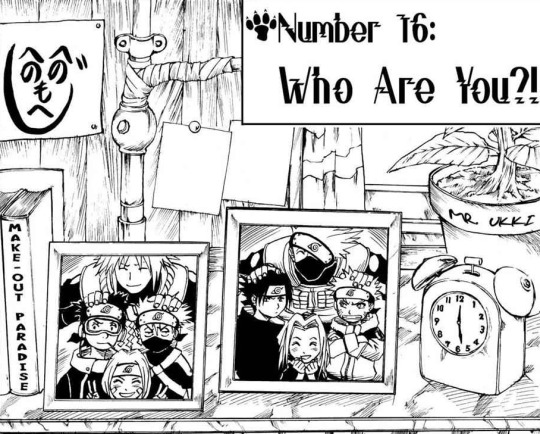
Naruto chapter 16.
They've been using television screens to broadcast live images from the Chūnin Exams back when Team 7 were genin. Gaara even looks at the television, which means there are also cameras, obviously, because they mention videotape. They also have VCR.


Naruto chapter 58.
Sasuke had a television at home, so all those interview programs that Naruto got invited too in Boruto were also a thing at least twenty years before it all. Later, everybody has a television at home, Naruto and Sakura have some more modern plasma screens.
Not to mention Konoha has screens all over their plaza in Boruto.


Naruto chapter 181 and Naruto Gaiden chapter 1.
Livestreaming wasn't just a Konoha thing, every single nation had televisions, cameras and they powered them using some special batteries as well. they also have those satellite dishes on top of buildings for broadcast.
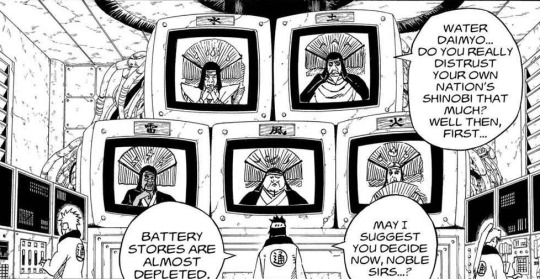
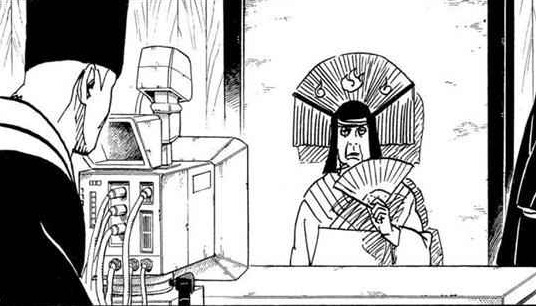
Naruto chapter 488.
The livestreaming is actually pretty useful for daimyō conferences and emergency Gokage Summits.
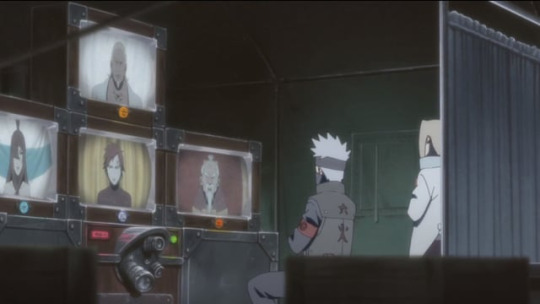
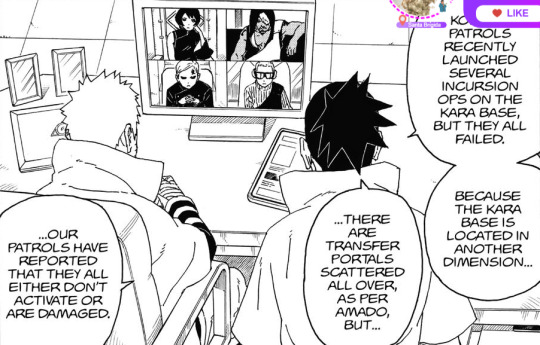
The Last: Naruto the Movie and Boruto chapter 57.
2. COMPUTERS, TABLETS AND VIDEOGAMES:
I don't think I need to delve into this one too much because it's clear that in Boruto people now work using desktop computers and laptops everyday. Naruto has a laptop, the Scientific Ninja Tools obviously have multiple computers, many of Konoha's teams and departments also use laptops, Boruto has a desktop in his room, etc.


Naruto chapter 700 and Boruto episode 219.
They also have tablets and even videogame consoles have also become available in modern Konoha.

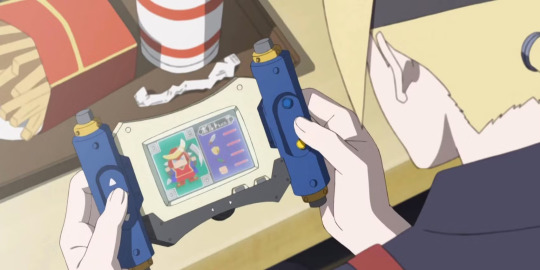
Boruto episode 211 and Boruto: Naruto the Movie.
Of course, since Naruto, there have been several machines used for health and recovery and DNA machines, etc. Or machines to facilitate mind reading as well.
3. TELEPHONES, INSTANT COMMUNICATION AND RADIO:
Phones and landlines became available after Naruto became Hokage and they're used pretty much all the time. Apparently mobile phones also exist but the information is very ambiguous because I don't recall ever seeing one, though Naruto mentions Sasuke has one depending on the translation.
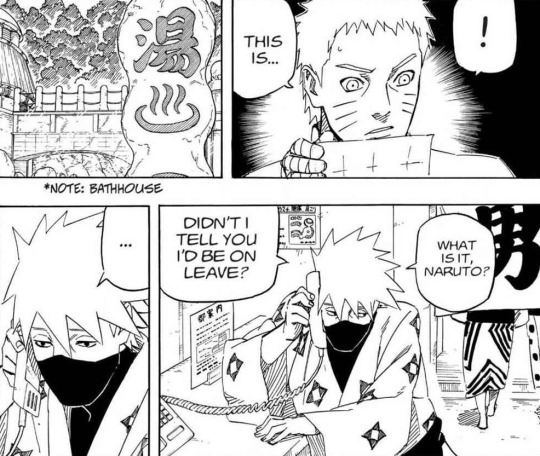
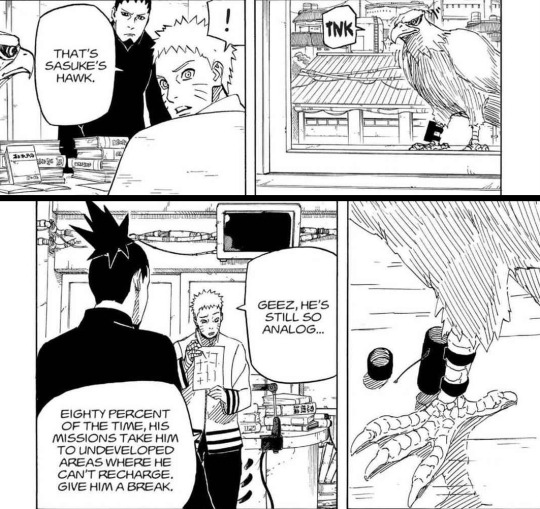
Naruto Gaiden chapter 2.
Wireless radio are also very commonly used in Naruto during missions and they even evolved during the 2 year timeskip. They cover at least 1km from the shinobi's position.
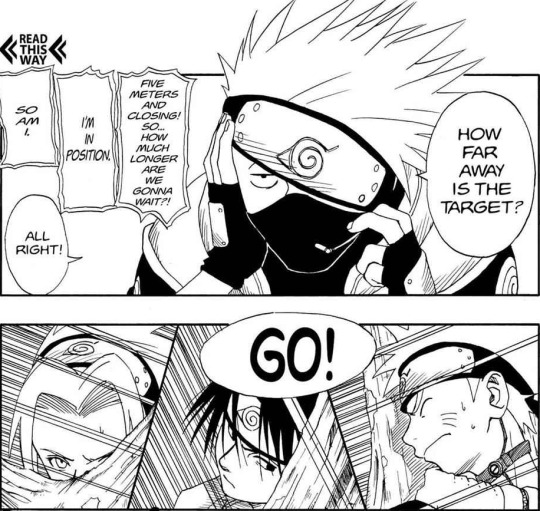

Naruto chapters 9 and 263.
They have become kinda obsolete in Boruto for no reason, but they were used at least in Boruto: Naruto the Movie and the early chapters of Boruto.
It's mentioned that it's not reliable for long distance communication, but the new device is at least covering more area since Konohamaru is somewhere in the Land of Fire talking to Konoha.
I don't recall them ever using it again, which is bogus because the new radio is very modern and small so it's easy to carry even without realizing, so I don't know why everybody in Konoha don't use it if they want to forego the landlines.

Boruto chapter 16.
Konoha, as well as the Allied Shinobi Forces, used special Chakra Communication Devices or telepathy devices for mass distance communication with machines of all sizes.
The Intelligence Division and Yin users (mental energy which is the base of mind related techniques) used it to share messages from across countries to eighty thousand shinobi, as the different divisions were scattered everywhere in the Land of Lightning and other countries.

Naruto chapter 521.
I talk more about it here since this is one of the most used technological devices in Konoha.
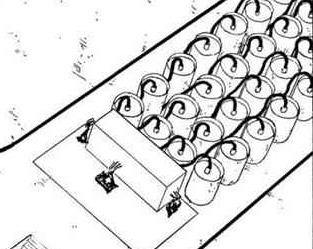

Naruto chapter 520.
Konoha also uses a more modern version of this device in their Barrier Team to notify people of intruders. They also use computers, screens and all technology mentioned above.
Similar to the wireless radios, I don't understand why Konoha hasn't made a smaller version of this for everybody to use if they want to forego telephones.


Boruto chapter 81.
Despite the technology, Sasuke still uses his hawks for example, or Naruto sends shinobi to other villages to dispatch more confidential information. Also, I'm not sure why they haven't made more practical and smaller devices for shinobi to use or why they decided to stop using some technology.
Now the shinobi gauntlet is another story because I don't understand why they're trying to sell it as some groundbreaking invention when it's just ninjutsu sealed inside scrolls. Fūinjutsu is used to seal anything, chakra, objects, ninjutsu, even life forms.
I know they are used to seal hiden jutsu as well but it's still nonsensical because Jiraiya can even seal Amaterasu inside scrolls, and Amaterasu is a Kekkei Genkai so it can't be imitated.

17 notes
·
View notes
Text



30th January 1886 saw Betty Mouat set sail from Grutness in Shetland for Lerwick aboard the Columbine.
Betty Mouat was 59 years old in 1886. She lived in a crofthouse with her brother’s family in the hamlet of Scatness–24 miles south of the town of Lerwick, Shetland. At this time, most people made the journey to the town by foot but Betty was some what disabled and preferred to travel there by sea.
The Columbine is said to have been a fine vessel, rigged as a cutter. The Captain and 2 crew members were experienced sailors. On January 30th, 1886, to escape bad weather, the Captain decided to sail to Lerwick from Grutness, near Betty’s home. With a southerly wind, this was expected to take 2–3 hours. The Captain advised Betty not to take the journey as he anticipated a rough passage. She rejected his advice as she was anxious to see a doctor and trade some fine hand knitted goods of her own and those of other community members. So, she went below with the knitted garments and one quart of milk and 2 biscuits.
The Columbine set sail. Thirty minutes later, disaster struck. A heavy sea caused the main boom to swing to port.The Captain and Mate tried to repair the problem when the boom threw them overboard. The Mate managed to clamber back aboard, only to become aware that his Captain was drowning. He and the third crew member immediately launched the small lifeboat and tried to locate the Captain without success. To their horror they then realized that the Columbine was too far away for them to overtake her. With extreme difficulty, they headed for shore, where alarmed watchers had observed the erratic scene.
The ships owner offered a reward to anyone who would launch a boat to go after the cutter. By now, the storm made this impossible. No steamship was immediately available—although, later, several searches took place over a wide area. Wireless telegraphy had not been invented but press agency telegrams were sent to the British government and the British Consul in Norway. On February 1st. it was considered that further searches would be fruitless.
Meantime, Betty had realised that she was alone. She was seasick, cold and frightened. After screaming bitterly, she calmed down,recognising that only God could hear her. Thereafter, her religious belief helped. The storm caused her to lurch about in the cabin until she propped herself into a sitting position—holding a rope with one hand then the other. Both hands were soon numb and blistered. She could not reach the forecastle so rationed her milk and biscuits. As the storm slowly abated, she put on the Captain’s thick jacket and wound his watch daily. On February 3rd,she finished her milk and the second biscuit. Some sunshine and the sight of some land cheered her. She tried to light a lamp with some matches she had found but the light only flickered momentarily.
This nightmare scenario continued until February 6th.She later described praying and counting the stars. On her eighth day the Columbine struck submerged rocks near a bay in Lepsoy island off the coast of Norway.
She managed to attract attention–in spite of her weakened condition. Fishermen helped her ashore and carried her over very rough terrain to a house in Ronstad where she received great kindness and care.
Betty was now safe but her ordeal was far from over as she became a ‘celebrity’ of that time. She reached Edinburgh on February 24th and finally Shetland on March 16th. At all stages of her journey, the public crowded to see her. Even when she was back home, she was obliged to entertain people on a regular basis.
However, she continued her knitting and lived for another 30 years.
Her rescuers received medals from the Government. The bay in Lepsoy where the Columbine went aground was named Columbukta.
The bay where she came ashore in Norway is now called Columbinebukta or Columbine Bay: on 17th May 1986 a plaque was unveiled there commemorating the event. The croft in which Betty Mouat spent most of her life has now been extended to become Betty Mouat’s Böd, a camping böd close to Sumburgh Airport.
You can find out more on the Scotiana web site here https://www.scotiana.com/betty-mouats-lone-voyage-a-miracu…/
16 notes
·
View notes
Text
When We Silence The Music, We All Lose
Recently, I came across an instrument company called AeroBand that makes wireless MIDI ‘air drums’ with a sort of haptic feedback response, marketed as ‘silent’ drums, and the concept stuck with me for a while. The purpose of these ‘drums’ would be fairly obvious to anyone who has ever lived in shared or rented accommodation: keep the noise down, be a good neighbour! But it also signals a bigger problem with vanishing musical and communal ‘third’ spaces where loud music, loud kids and activity can exist, and the music in turn gets quieter and more invisible until you can’t hear what it is saying anymore.
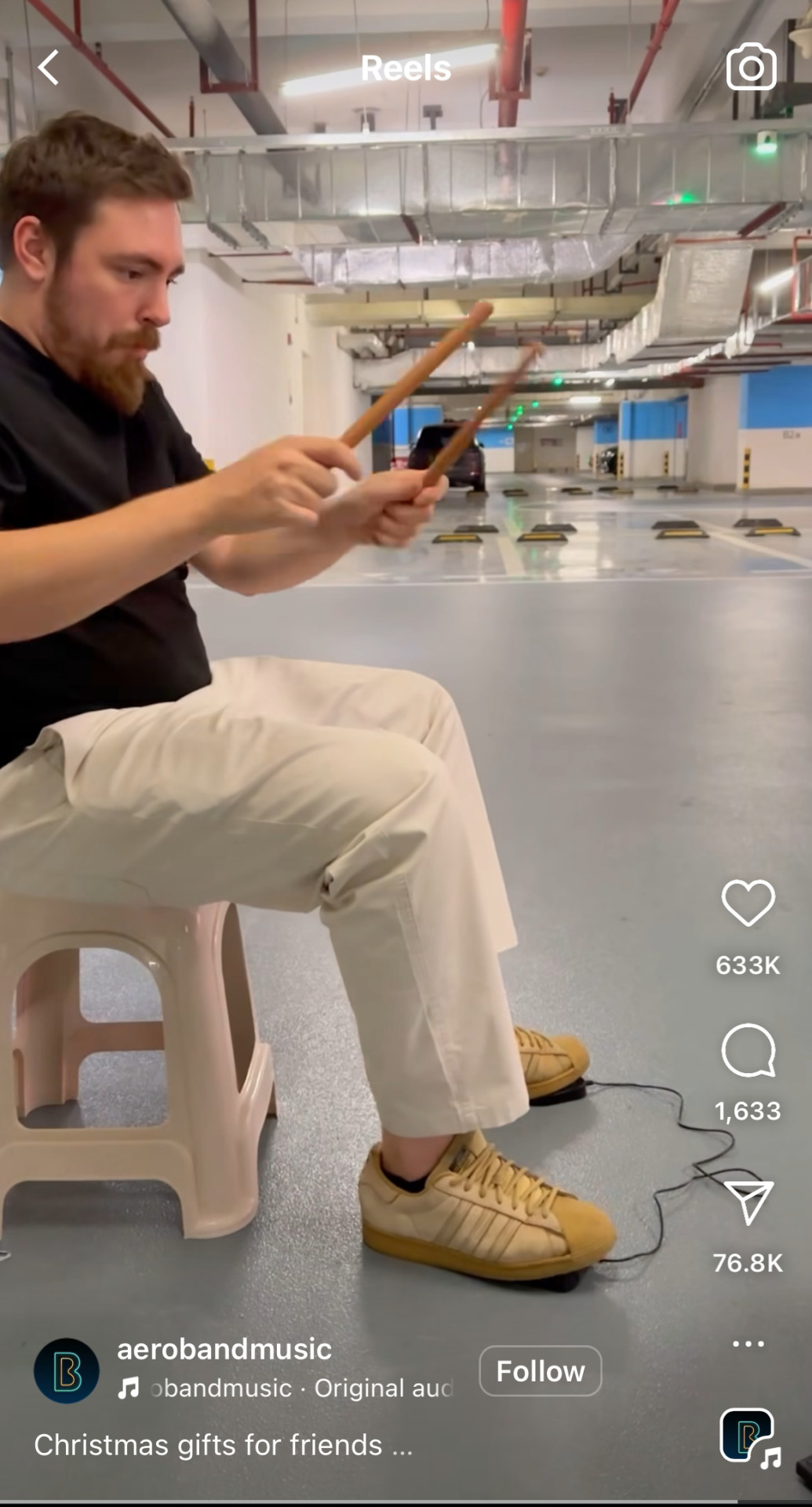
We have gone from drum kits to electronic pads and deadened practice kits for the domestic drummer, to eventually having people in rented accommodation being so worried about noise complaints that they’ve had to create drum-less drums. No drummer prefers these, they are simply a way of protecting yourself from eviction. Living in matchbox houses with paper thin walls made of cheap and in-no-way soundproof material, packed so close you’re a stone’s throw from your neighbours, we’ve silenced the drumkit entirely.
Is it any surprise then that people are not forming bands in the numbers they used to 30 years ago? Is it a surprise that we moved from bands rehearsing in basements and garages in their houses, to samples, electronic kits, MIDI, solo ‘bedroom’ stuff; even as we lose more and more rehearsal spaces, and schools stop offering kids musical lessons because they must be inferior to subjects that lead to a job in IT or finance? We lose youth centres, community spaces, musical spaces, and everyone’s world gets a little quieter.
Gentrification. People move into the ‘fun’ parts of town and then file complaints against the very things that make an area ‘fun’ in the first place: music, noises, lights, life, later evening events and establishments. A residential permit accidentally granted to a builder in downtown Montreal’s vibrant entertainment and culture district and the subsequent noise complaints from residents who knowingly moved in next to an old, culturally significant music theatre, have recently led to the shutting of the 130-year old La Tulipe. Kingston, Ontario’s BLU Martini, a beautiful 400-capacity bar and music venue located right on the downtown waterfront, shut its doors this September after 41 years of playing an important role in the city’s homegrown music scene, ten in its final location. With no one else wanting to pick up the mantle, the space’s next inhabitants will be Chuck’s Roadhouse Bar and Grill, who aren’t particularly interested in ensuring the space continues to host emerging live musical talent. Cardiff grassroots venue The Moon, known for launching the careers of many of the UK’s best emerging musicians, closed its doors last month.


Tiny Horse (left) and The Wilderness (right) at Kingston's BLU Martini in 2024.
Elsewhere, city councils are so afraid of the word ‘rave’, they aren’t fully sure what it means but think it means ‘illicit drugs-taking event’ and want to ban any instance of it. The raves move out of the city, to obscure, remote locations, or abandon the city altogether. The city loses another piece of its existing culture.
Sometimes we stop the music right at the source: The Rehearsal Factory, a notable rehearsal space with spots all over Toronto, has dwindled down to 2 or 3 locations over the last 20 years, with their notable Richmond St. branch being sold off to a controversial Australian megachurch. Roswell Rehearsals lost its space in Kingston two years ago due to noise complaints, and its absence was sorely felt by the city’s many young, renting musicians who felt caught out by the lack of a dedicated musical space. Fearing hefty fines, potential police action and even eviction if they tried to practise indoors, the warm welcome it received on reopening its doors this October was evidence of how much it was needed in the local music community. As more and more artists live in rented or shared accommodations where practising out loud simply isn’t practical, the loss of rehearsal spaces within reasonable commuting distance is effectively the death of emerging music: it either is forced to spread itself thin hours outside of towns and cities, the congregation sites of culture and events, or it dies altogether, leaving the cultural fabric of the whole nation weaker and less colourful.
I wanted to take a walking tour of historically important music sites in London when I visited. As one of the music capitals of the world, London, and the UK by extension, have been responsible for a large amount of global popular culture: with an annual music export worth £2.5 billion in 2021, they are one of only 3 countries that exports more music than it imports, and the second-largest exporter overall.
The inner city of London alone has had many important venues, clubs, studios— the Blitz, where the New Romantic kids first congregated for their David Bowie nights in the 1980s, The 2i’s Coffee Bar, where many stars of the 1960s were discovered, including Cliff Richards, Tommy Steel, Francis Bacon and much of the skiffle movement, are just two examples.

New Romantic kids at the Blitz in Soho, London in the 1980s.
Neither exists anymore. Three-fourths of the planned London music tour involved looking for ghosts: empty spaces, corporate offices and residence buildings sitting on the burial grounds of moments of cultural significance. I didn’t end up doing the tour, I didn’t think I could bear to look at these places, to try and imagine what they once were and what their downfall means for the health of the modern music scene.
The London-based neo-jazz group Ezra Collective formed in 2012 as teenagers in a youth club: they were in the Tomorrow’s Warriors youth band, a music education initiative at the South Bank Centre in London. Eleven years later, they shone as the first-ever jazz winners of the prestigious Mercury Music Prize for their 2023 album, Where I’m Meant To Be, signalling a shift in how their musical movement blending traditional jazz with RnB, soul, electronic, alternative, Afrobeats and hip hop, has been steadily gaining legitimacy as a uniquely British sound, even within the traditional circles of jazz study where it was once treated as mongrel.
In his acceptance speech at the Mercuries, Ezra Collective percussionist Femi Koleoso took time to celebrate their youth club beginnings, praising the ‘good, special people putting time and effort into [helping] young people to play music’. Much has been made of the benefits music has for young people: everything from developing brains to keeping kids off the street, giving them a sense of community and purpose; something to look forward to and love. Ezra Collective are proof of just how far providing young people with musical spaces can go.
youtube
Sure, sites pop up and go down all the time, often shining brightly for a short period of time. That is part and parcel of being in the ideas- and coffee (alcohol?)-driven, volatile, passion-fuelled and chronically underfunded art scene that music is. But when over the years, we are left with less and less: fewer spaces, stricter laws, higher costs, less funding, decreasing importance given to the role musicians play in society, and ultimately fewer venues to play, fewer musicians, and certainly fewer of the vital working class voices that so often hold a mirror to our society, as music becomes the reserve of the rich, there is no doubting that its strength and conviction will dilute without conscious intervention.
It’s the same with the Bluetooth drums. I know the makers only want to do good, bless them for trying, and I don’t doubt a lot of people will find this a better practice solution than drawing MIDI notes on a quantized grid, because it still feels a little like playing live, albeit hitting the air with vibrating haptic feedback. It’ll be AR or VR drums next, inevitably. I’m aware of the passage of time and I don’t wish it ill.
What saddens me is that we lose so much of the spirit of art and culture to this dilution. The music getting quieter as to not offend the neighbours, even as musicians get slowly choked out of gentrified spaces. Writers being unable (or less freely able) to explore darker themes so as to not set the dogs of the ‘problematic writing’ police on them. Artists presenting as less dramatic so as to not appear ‘weird’ to an uninvested audience; TikTok’s adherence to a straitjacketed definition of correctly performed ‘authenticity’. Making fun of anyone who dares to dress weird, look different, say something new. You see it everywhere. Art gets diluted to become palatable with ever-diminishing returns, and in doing so it loses its ability to express itself and say something that needs to be said.
I don’t know. Some could look at it as the weird, twisted, fucked up plant growing through cracks in the pavement, doing what it can to reach the sunlight. Art surviving despite everything; changing, evolving, and somehow being more poignant and posing a stronger message as a result.
But even a 22h everlasting candle has an end. We’ve got to do more to protect our artistic spaces and outlets, and the ability to create without fear, or we risk losing them forever. It takes just one generation to train out habits; we see it with other obsolete things, let’s not let art be one of those.
Read on Sounds Live Magazine.
#music#music journalism#art#artists#cost of living#landlords#late stage capitalism#NIMBYism#drumming#musicians#music industry#live music#live venues#anti capitalism#neo romanticism#80s music#working class#class war#politics#UK politics#US politics#history#music history#cdnpoli#David Bowie#Ezra Collective#social media#London
11 notes
·
View notes
Text
Nikola Tesla on Human Energy

In an article written in 1900 titled “The Problem of Increasing Human Energy,” Nikola Tesla shares his ideas aimed at revolutionizing the way energy is generated, transmitted, and utilized, with the ultimate goal of enhancing human well-being and progress.
Tesla starts with his philosophical perspective on human life–what is it, and where is it going? He implies that human life is a movement, and since the existence of movement naturally implies a body which is being moved and a force which is moving it, then wherever there is life, there is a mass moved by a force. Since action and reaction are coexistent (Newton’s third law of motion), then human movement, along with all movement in the universe, is rhythmical. He explains how we are witness to this rhythm in the motion of the stars, the surging and ebbing of the oceans, the changing of seasons, and the infinitely varied phenomena of organic life. Tesla then identifies humanity as a unitary whole, and comes to the conclusion that the same general laws of movement that govern the whole physical universe must be applicable to all living things, including humankind, and we may understand this movement by using mechanical principles. Consequently, Tesla implies we may measure human energy using the formula for kinetic energy, E=MV²/2, which is one of the fundamental physics equations that describes a moving object's energy. E represents energy, M being human mass, and V a hypothetical velocity. Tesla goes on to consider humans analogous to machines and asks how do we increase the energy of this machine positively and decrease the negative forces decelerating it? In answering this question, Tesla suggests:
Promoting marriage
Having more children and raising them to a higher velocity, or enlightenment, than their parents
Attention to health
Improving quality of drinking water
Providing healthful food to those in need
Encouraging a vegetarian diet rather than a carnivorous one
Discouraging artificial food
Moderation of exercise between both mind and body
Discouraging bad habits with alcohol, tobacco, tea, coffee, and other stimulants
Discouraging gambling
Improving hygiene, education, and morals
Reducing ignorance, stupidity, imbecility, religious fanaticism, etc.
Improving the productivity of soil by electrical means
Increasing the workforce
Ending warfare by developing machines (remote controlled robots, drones, etc.) to fight battles leading to fewer human casualties
Encouraging peace by bringing humans in closer contact
Improving methods of manufacturing (i.e., coal, gas, iron, aluminum)
Withdrawing from traditional energy sources and tapping into renewable energy
Tesla shares his invention of a radio controlled boat and its possible use. He also shares his experiments involving burning of nitrogen in the atmosphere, wireless transmission of power, and more. He discusses his vision for harnessing natural forces to help increase the energy needs of humanity. He proposes a global system of wireless power transmission, using the earth as a conductor and waterfalls as a power source. He also explores the possibilities of interplanetary communication and ideas related to tapping into cosmic energy sources and utilizing them for the betterment of humankind.
Tesla finishes his article saying:
"I anticipate that many, unprepared for these results, which, through long familiarity, appear to me simple and obvious, will consider them still far from practical application. Such reserve, and even opposition, of some is as useful a quality and as necessary an element in human progress as the quick receptivity and enthusiasm of others. Thus, a mass which resists the force at first, once set in movement, adds to the energy. The scientific man does not aim at an immediate result. He does not expect that his advanced ideas will be readily taken up. His work is like that of the planter — for the future. His duty is to lay the foundation for those who are to come, and point the way. He lives and labors and hopes with the poet who says:
"Schaff’, das Tagwerk meiner Hände, Hohes Glück, dass ich’s vollende! Lass, o lass mich nicht ermatten! Nein, es sind nicht leere Träume: Jetzt nur Stangen, diese Bäume Geben einst noch Frucht und Schatten."
(Daily work — my hands’ employment, To complete is pure enjoyment! Let, oh, let me never falter! No! there is no empty dreaming: Lo! these trees, but bare poles seeming, Yet will yield both food and shelter!)
*Goethe’s “Hope." Translated by William Gibson, Com. U. S. N.*
#nikola tesla#science#history#quotes#energy#wireless#power#humanity#humankind#philosophy#ahead of his time#ahead of our time
161 notes
·
View notes
Text
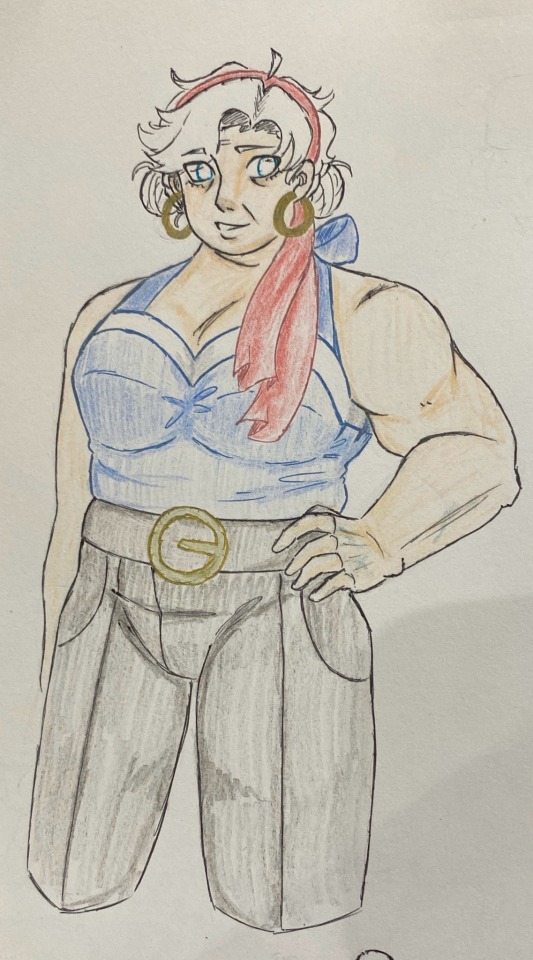
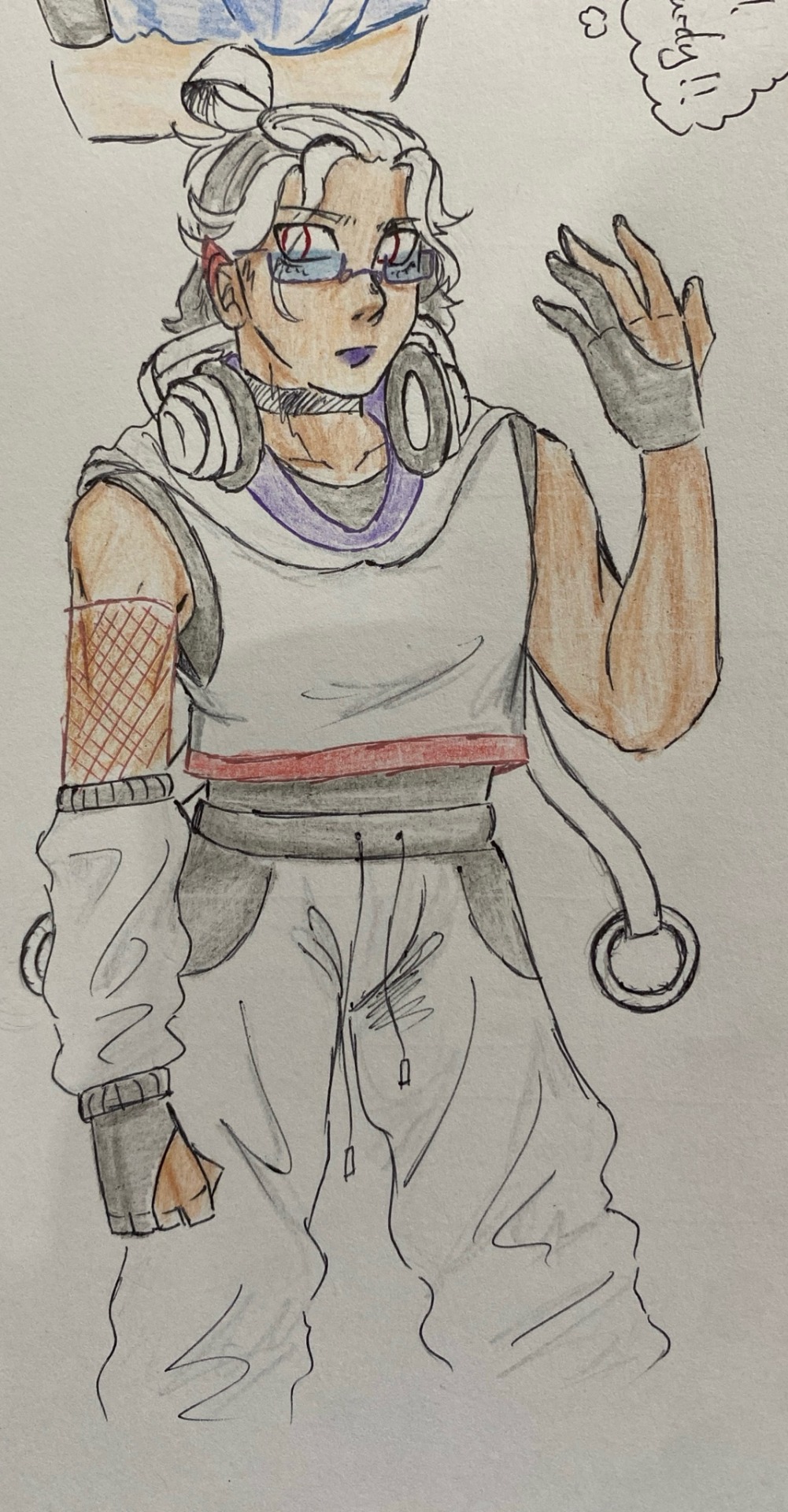
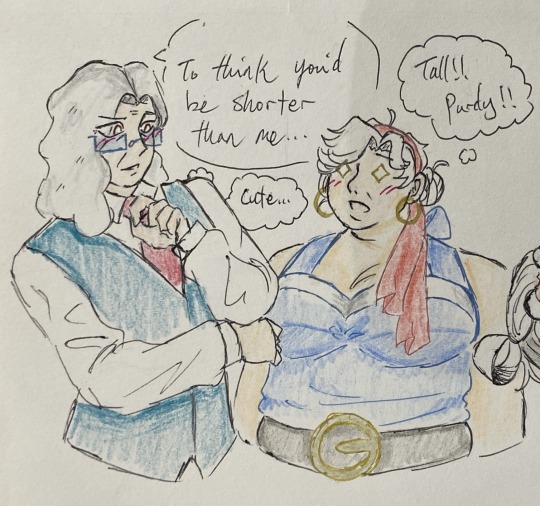
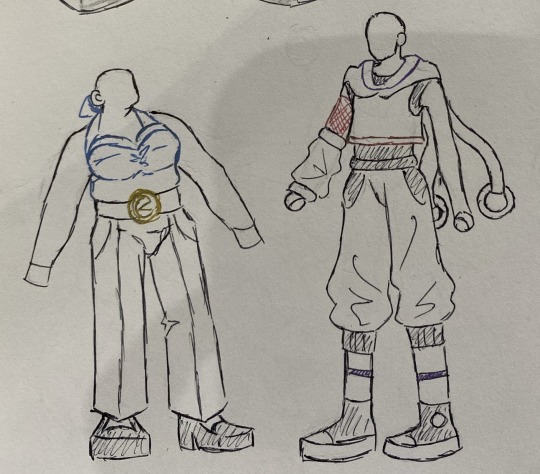
I lied about finishing my homework early I'm weeping that shit was vile it took like 12 accumulated hours to finish it and the answer was kind of obvious if I had just calmed tf down and read the material properly instead of freaking out over having homework and trying to rush to finish it someone come beat me up please;;; i promise i love my wireless communications class but hoooooly shit i do not think i'm cut out for it;; luckily it's not my major but alksjd;faj
Hi. Taking a break from designing my AU and also from researching so take these concepts of my OCs in their holoforms/Humanformers bodies! Since @idk-8d invited me to do so 🥂 Haven't drawn humans in a while, so it was nice to do again!!!
Context for my OCs here, and idk's continuum that they're part of here!
Forgot to color Knickknack's hair;;; oops. I'd imagine it's grey-ish though! Also her hairstyle's kinda hard to look at but it's twin-buns and the base is braided 💕
(More rambling about their designs under the cut~~)
I wanted Knickknack to resemble some pinup models (body, hair, and clothes-wise), since I was looking at them to see how bigger ladies are drawn! I was imagining both her being friend-shaped and huggable, while also being sturdy and jacked at the same time, which was kind of a challenge (I originally planned for her to have either a farmer's or a miner's clothes, but I wanted her to wear something cutesy and fashionable). I hadn't drawn too many different body types until recently, so she was fun to design! And it was good practice 💕
I wanted her silhouette to have shorter... everything than Marjorie (the human she's a guardian of, who idk designed for me bless her spark), like her hair, and her body in general. I also find it really cute when the "monster" in a relationship has a human form that's shorter than the human in the relationship. Also I wanted to draw some veins on her because 1. she's stacked, 2. she's older !!! i love women;;;
I wanted Reave to look more modern and like a boy in an Asian idol group, so he's... also fashionable. Though he's a spy and supposed to slip through cracks and run alongside his target unnoticed, he chose a flashy car as his alt mode, so might as well make him baggy and noisy-looking in his human design, too. Also, the thing on his ear is an ear cuff that makes your ear look pointed, like an elf's ear. I'm sure there's a name for it but I'm blanking;;; I also made sure his arms are uneven because he's missing some arm armor in his base form.
I hope he looks like he could be a romantic interest of someone of any gender lol. I'm gonna be honest I gave him clothes I want (except for the Converse because I love running and I don't like how hard they are, no shame to those who wear them but they did not fit with my hobbies lmao), and my skin tone!!! My goal in life is to be so attractive to anyone they question themselves, and it's been that way since like middle school so I projected that onto Reave ig 🥂 Whoops!
(Edit: GUYS IM ASIAN DONT WORRY)
Anyway, thanks for looking at my post 💕
(okay so i originally planned for this to be posted at like midnight JST but apparently i DID NOT post it so here it is posted like 11 hours later right before class starts alksjdflajsl)
#my art~#transformers#maccadam#transformers oc#tf oc#transformers prime#tfp oc#humanformers#holoform#<- putting both just in case!!#my ocs ->#knickknack#reave#marjorie#ship kids#ship child
6 notes
·
View notes
Text
Okay, so how does the bat communication system work
They could use signal but tbh. That might be to much functionality on what we would need.
Authentication is like in this case pretty trivial, because they are like 2 dozent people who can all be in the same room at some time and get their devices in person. Maybe they have some kind of rsa token for that. And also they build their own devices (again like 2 dozent or something so)
Also the serverlessness of signal is great, if you dont want your data in some server, but also again. They probably have their own servers anyway. And soemtimes the bat communication network is written like if someone is offline they just never get the message so very normal client2client would work.... I would prefer using the batservers instead however.
Anyway so the signal protocol implements perfect forward secrecy (so if the key got into attackers hands the earlier send messages are save) and perfect backwards secrecy (future messages are safe). So you would keep these parts...
Because again they are only like max 2 dozent people the major drawback of signal (it not scaling well for big group communications) this also does not apply.
Okay now to the part of the wireless communication.... We do have the problem here that most of batman canon is before 2018. After thinking a lot about that and crying a bit i decided, to make any of this work we have to make an au in which Wayne enterprises build a 5G network in gotham in the 90s. In this au 5G would be the first one someone invented, so downgrade attacks would not work.
I also asked my friend for suggestions and he said maybe Wayne Enterprises did build a totally second Network additionall to the normal Gotham wireless network with own bts for the bats. And so the bats can just use their own build protocoll (using Dragonfly and ECDH). The Batman Protocoll would use own headers so the normal bts will just ignore that, and we will encrypt the header, so the headers can not be tracked.
I know some 90s comics also said Oracle is talking to the bats per phone, but for the sake of my sanity we are ignoring that.
Anyway so what do the bats for sure not use:
Fax: many things which irl would need to be somewhat private are send over fax, because this is client2client and not saved on any servers which belong to some external company. However!!! It is also not encrypted and just sends the message on clear text. Everyone with access to the connection could just read that
Wifi (i mean. the batcave might be bigger than 50 meter radius so, maybe they can actually use it there.)
Bluetooth
SMS
like normal phone calls
27 notes
·
View notes
Text
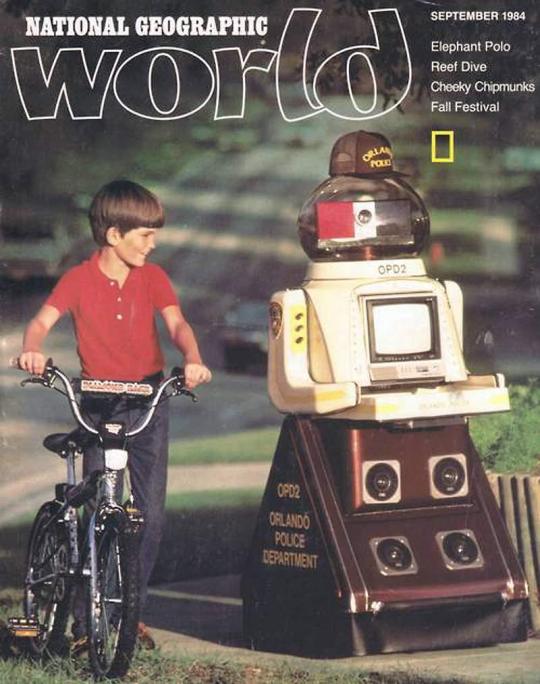
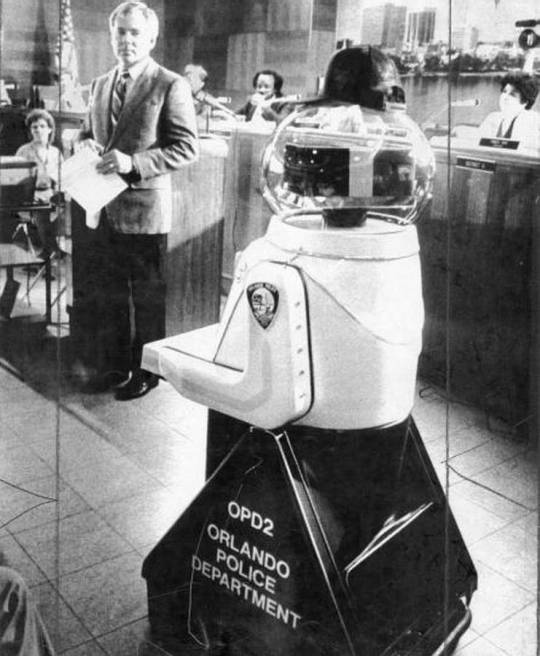
OPD2 – Orlando Police Department, Orlando, FL (1983). A DC-2 robot by Android Amusement Corp. "Orlando, Fla. … has a new twist in teaching traffic safety. It has just sworn in OPD2, a walking, talking robot policeman with a traffic light in its right arm, a video camera in its belly, and a wireless, two-way microphone system. Chief William Koleszar, who came to Orlando in February 1981, says, "One of the things we did not have here were school liaison officers." "There was a 'talking' Volkswagen in Nevada, but we didn't have a gimmick. Then we heard about the Atlanta Police Department's success with a talking robot that they used to help communicate with frightened kids." The result was a specially designed $15,000 robot with Orlando badge No. 92, a police cap, and a 'trailer that has "Home of OPD2" on the back. "Most people think that there is a midget inside - he's that agile. The robot actually does hear and an officer outside the room responds to questions." Chief Koleszar admits OPD2 is a gimmick, "but it's getting the safety message across." OPD2 was paid for by a Law Enforcement Trust Fund set up by the State of Florida, with money from the sale of airplanes, cars, boats, and other equipment confiscated from drug-running operations." – Talking robot, stop-sign monitors promote safety on road, by Jeffrey J. Carmel, The Christian Science Monitor, May 10, 1983.
14 notes
·
View notes